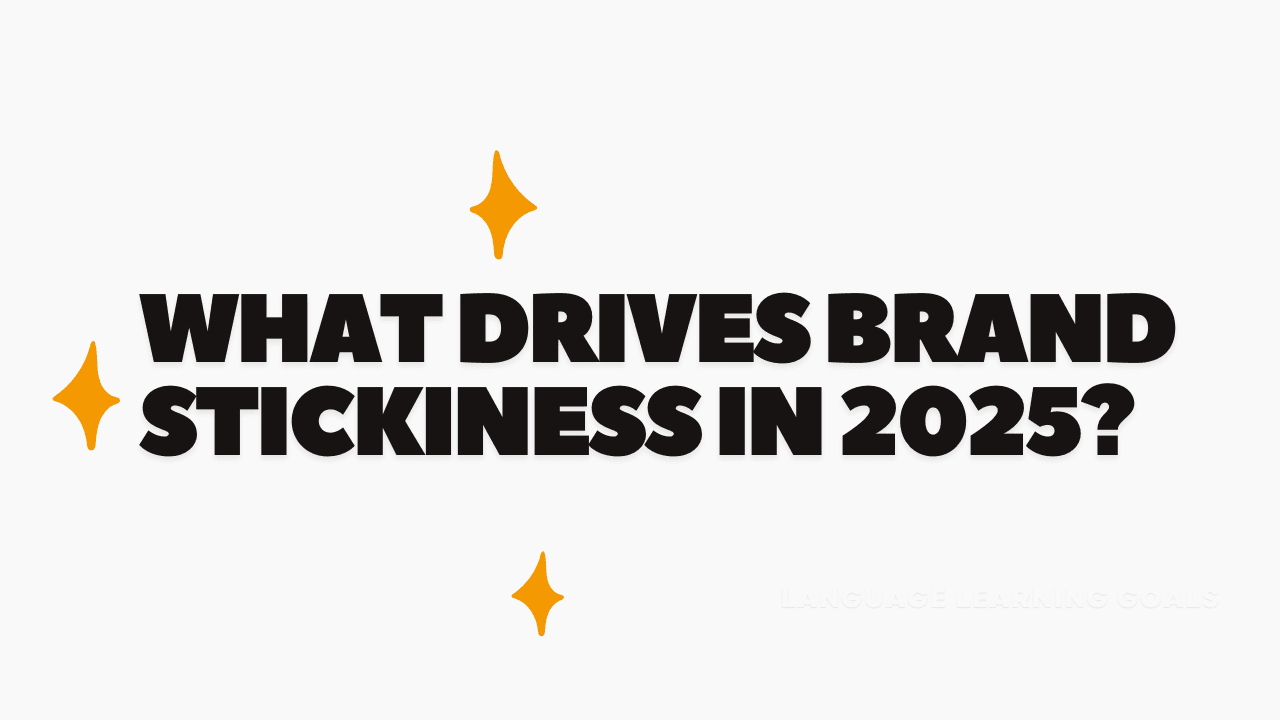What Drives Brand Stickiness in 2025?

In an era where customer acquisition costs are climbing and attention spans are shrinking, brand stickiness has become more than a buzzword — it’s a competitive advantage. But what does brand stickiness really mean in 2025, and more importantly, what actually drives it?
In simplest terms, brand stickiness refers to a customer’s likelihood to keep returning, engaging, and spending with a brand over time. It's not just loyalty — it's emotional, habitual, and deeply tied to how your brand fits into a customer’s life. So, what’s behind this “stickiness” in 2025? Let’s break it down.
1. Personalization That Feels Human
In 2025, personalization is table stakes. But what sets sticky brands apart is personalization that feels thoughtful and emotionally intelligent. Today’s consumers expect more than a “Hi [First Name]” — they want content, offers, and experiences that reflect their preferences, timing, and intent.
What works:
- Product recommendations based on behavior, not just demographics
- Loyalty tiers that evolve with the customer journey
- Post-purchase flows that address usage patterns or reorder needs
Sticky brands in 2025 use personalization to make customers feel seen — not targeted.
2. A Strong Brand Narrative
Sticky brands stand for something. Whether it’s sustainability, self-expression, or self-care, customers stay longer with brands that communicate values they can align with.
Your brand narrative needs to go beyond a mission statement — it should show up in your:
- Product choices and packaging
- Tone of voice and visual identity
- Email marketing, community building, and loyalty rewards
The more aligned your story is with your customer’s lifestyle, the harder it is to leave you.
3. Community-Led Growth
In 2025, brands that win don’t just build audiences — they build communities.
Community drives stickiness by:
- Offering a sense of belonging beyond the product
- Creating two-way engagement (like UGC, reviews, or discussions)
- Driving emotional connection through shared purpose
Whether it’s a Discord group, brand ambassador program, or customer spotlight series — creating space for customer voices boosts retention.
4. Frictionless Experience at Every Step
Even the best loyalty strategy fails if the experience is broken. Sticky brands have optimized their end-to-end customer experience — not just on the website, but everywhere the brand lives.
In 2025, this means:
- Seamless cross-device checkout
- Clear, fast shipping policies
- Easy returns and reorder options
- Consistent experience from email to SMS to unboxing
Convenience is loyalty. The fewer the clicks, the higher the stickiness.
5. Habit-Forming Product Ecosystems
Sticky brands often build ecosystems — multiple entry points and product pathways that deepen engagement over time.
Think:
- Bundles and subscriptions
- Add-ons or accessories
- Loyalty points that unlock more value
This creates a feedback loop: the more customers use your product, the more they benefit from staying. Brands like Apple, Glossier, or Who Gives a Crap win here — not by just selling one product, but by offering a lifestyle rhythm.
6. Transparent & Ethical Practices
Modern consumers are hyper-aware — and increasingly skeptical. Stickiness grows when brands are transparent, ethical, and proactive.
This includes:
- Clear messaging around sourcing and sustainability
- Honesty in marketing and influencer collaborations
- Taking accountability when things go wrong
Trust is hard to win and easy to lose. Sticky brands in 2025 invest in earning trust at every stage.
7. Retention-Centric Loyalty Programs
Loyalty programs are evolving from transactional tools into emotional retention engines.
What sticky brands do differently:
- Gamify progress and make it visible
- Combine rewards with recognition (exclusive drops, early access)
- Use loyalty data to inform re-engagement efforts
A points-based system alone isn’t enough. Stickiness is built when loyalty feels like belonging, not just spending.
The Takeaway: Stickiness Is Intentional
In 2025, sticky brands don’t just have better products — they have better relationships. They’re easy to buy from, hard to forget, and even harder to leave.
Expore More
1. 7 Proven Strategies to Increase Your Customer Lifetime Value
2. Customer Retention and Tiered Loyalty Programs: A Powerful Duo for D2C Brands. 3. How to Increase Customer Retention and Build Lasting Brand Loyalty 4. Beyond Discounts: 5 Proven Strategies to Turn One-Time Buyers into Regular Customers 5. Loyalty Programs vs. Subscription Models: Which One Builds Better Customer Retention?